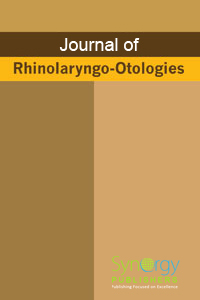
Evaluation of Eustachian Tube Function by Tympanometry in Patients of Deviated Nasal Septum and Sinonasal Polyposis Pages 7-10
Seema Patel, Kalpana Dasgupta, Md Izhar Khan and Trupti Bhagat
Department of ENT, Government Medical College, Nagpur, Maharashtra, India
DOI: http://dx.doi.org/10.12970/2308-7978.2016.04.01.2
Download PDFAbstract: Objective: To study the effect of deviated nasal septum (DNS) and sinonasal polyposis (SNP) on eustachian tube(ET) function & whether the function would improve on septal correction and removal of polyp.
Patients and Method: A prospective study of 45 subjects of DNS and 25 subjects of SNP. A detail history was taken including symptomatology, predisposing factors, treatment received. Thorough ENT examination was done after meeting all the inclusion and exclusion criteria, otomicroscopy nasal endoscopy and PTA was done whenever indicated. Tympanometry was performed in all cases using impedence audiometer prior to septal correction and removal of polyp and repeated 4 to 6 weeks after surgery. Tympanogram was classified as described by Jerger in 1975, in clinical experience with impedence audiometry. Any improvement in tubal function was noted. In cases where tubal dysfunction persisted, otomicroscopy and nasal endoscopy was performed again to plan the further line of management.
Result: Normal eustachian tube function was achieved in 75.55% after septal correction and 74% after polypectomy which was 51.11% and 56% respectively before surgery.
Conclusion: This study suggest that chronic nasal obstruction due to deviated nasal septum and sinonasal polyposis is a frequent cause of ET dysfunction. Surgical correction significantly improve tubal function and middle ear ventilation.
Keyword: Eustachian tube function, tympanometry, deviated nasal septum, sinonasal polyposis.
Read more

